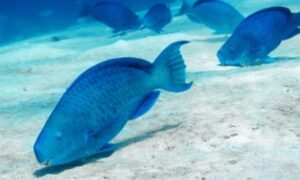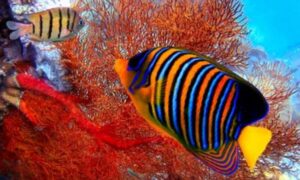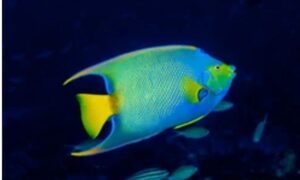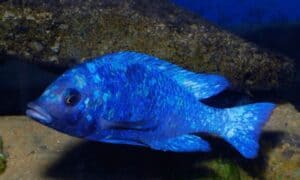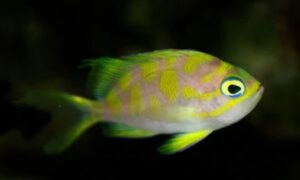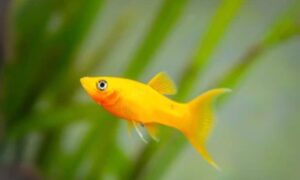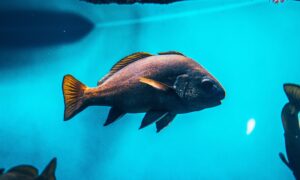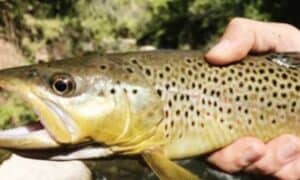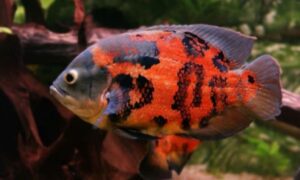In this article of ours, you will find everything related to Elephant Ear Betta Care, Diet, Tank mates, and much more.
Elephant Ear Bettas, which are also known as Dumbo Bettas or Dumbo Betta fish, are known as one of the most distinctive and fascinating betta fish species. The scientific name of the elephant ear betta fish is dumbo betta fish and betta splendens. Their long, flowing fins and rounded heads give them a great look that makes them distinct from other bettas and even other types of fish species.
They are not difficult at all to care for, but there are a few key reflections you must take into account if you are thinking about having your very own Betta tank.
If you are looking to add some fun and personality specie to your fish tank with an uncommon variety of Betta, then the Elephant Ear Betta which is also known as Dumbo Betta fish may be the best you are looking for. This distinct diversity of betta has oversize fins, which creates a look that evokes the image of its namesake!
And even though they are not much difficult to care for, they do require special attention because of their size and shape.
A very important part of taking care of your pet betta fish is to make sure that they have the right tank and accommodation in which they are living and to ensure they are secure and healthy at all times.
Contents
Origin and Description
The Elephant ear Betta fish is one of three common types of betta with fins so huge that they look similar to elephant ears. But something you might not know is that it is actually called a dumbo betta. This variety was grown in Thailand and this is why dumbo betta fish has known to be a reference to Disney’s most famous elephant-eared character!
Elephant ear betta fish is local to the waters of the Mekong Delta, Vietnam, and Thailand on the East Coast of Asia. This region mostly consists of floodplains, canals, and also rice paddy areas.
The truculent disposition of this fish usually led to its finding in their aquarium. King Rama III from Malaysia was inspired by the belligerent behavior of the fish. A man received a few of the fish and then he made a collection of these fish. Also later they were handed to a medical scientist named Theodore by the same man. Over many years, the fighting spirit fish was also known as Betta splendens.
Presently, Elephant ear bettas are also listed as one of the vulnerable fish by the IUCN. Many other animal habitats have been injured by pollution, and others have been removed to require a way for construction. Dumbo betta fish is basically a small fish, growing to about 2.5 inches (6.4 cm) in their length.
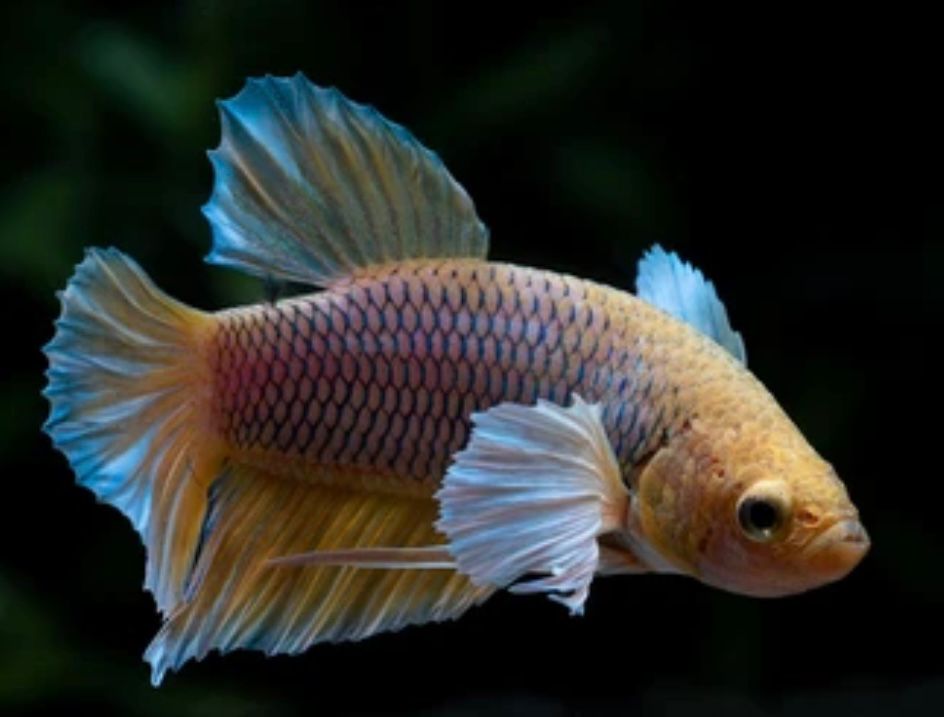
Species Profile of Elephant Ear Betta
The Dumbo betta fish is actually one of the five closely related species which originates from Southeast Asia. This type of betta variant is also known as Dumbo betta fish or elephant ear betta fish because of its special physical appearance.
The dumbo betta is included in the family Gouramis, Osphronemidae and it is known for its huge ears. These type of fish are usually referred to as elephant ear bettas because of their large head growths, which looks similar to an elephant’s ears. They can usually grow up to 3 inches in length and they have a life span of up to 4 years if they are living in proper care.
Dumbo betta fish have a black stripe that starts from behind their eyes down towards their tail fin. They have usually a dark brown or green color body with markings on their fins and tail fin and they also have a white belly. Male elephant ear bettas species basically have huge head growths than female elephant ear bettas, even though females will at times develop small ears too.
Elephant ear bettas are a very calm community fish and they usually do well when kept with other non-truculent species of similar size such as tetras, rasboras, rainbowfish, dwarf cichlids, angelfish, etc
Habitat of Dumbo Betta Fish
Elephant ear betta care is also very important. This fish is like a huge body of water in which they can swim around easily. This is necessary because they are prone to develop fin rot if their fins do not find enough room to dry out. The suggested tank size is usually 10 gallons for one fish, but you might need to increase that quantity for two or more elephant ear betta fish.
If you are planning on keeping your elephant ear betta fish in a smaller container than 10 gallons, then make sure to change its water often at least once per week as it is very important for elephant ear betta care. Bettas are able to live in smaller containers, but it will require more work on your side. The beat temperature range for an elephant ear betta is between the range of 78 and 82 degrees Fahrenheit.
For maintaining these temperatures, you should keep your tank away from drafts and other heat sources such as vents or direct sunlight. You must also avoid putting them near cold windows during the cold winter months. Some of these fish owners also find success with placing their tanks under black lights, but there is no scientific evidence which is showing whether or not black lights affect elephant ear betta health in any way. Elephant ear betta fish also like hiding places in their aquarium like caves made from rocks and driftwood so they can have fun during playtime.
Elephant Ear Betta Male
The Elephant ear betta male fish are extremely truculent, so it is not possible to keep more than one in a single tank.
Also, they tend to be a little larger than female species, even though this difference contributes only a little over an inch to the usual overall size.

Elephant Ear Betta Female
It is possible to have multiple Elephant ear betta female fish in the same tank as they are not that aggressive, and you can also keep other fish around if you have an Elephant Ear Betta with a mild temperament. They also tend to be a little bit smaller than their male partner.
Tank size and tank requirements
Even though dumbo betta fish species can be housed in a tank that is as small as 5 or 10 gallons, because of their nature, the minimum suggested tank size is 20 gallons which are approximately 76 liters.
The Dumbo Betta fish does best in a tank with a capacity of 5 gallons or even more. Bigger tanks like 10 gallons or more are even better with these species, as long as you can find an appropriately sized tank for them. We would definitely suggest staying away from tiny tanks because many Bettas would not be able to swim well in small spaces.
You can even use a large tank as a multi-species setup which will mix and match other fish species for the entertainment of your pet. Just you have to make sure you have enough room for all of them. If you don’t want to mix too many species, then it’s recommended to add some plants and decorations that will be able to provide plenty of hiding places for your fish. Bettas are shy by nature, so they love to have places where they can hide if they feel unsafe by other fish species or even human interaction.
It may include caves, driftwood, rocks, and even artificial plastic plants so your fish can hide when they want or they can also have good playtime. When the situation comes to filtration, you will want something very basic like a sponge filter or a power filter. These both will do a great job of keeping your water clean and also providing ample oxygenation for your fish to breathe easily. And do remember when you are choosing filters, bigger will be always better just you should make sure there is enough space around it so that your dumbo betta fish does not get sucked into it!
Tank mates for Dumbo Betta Fish
Some best tank mates for your dumbo betta fish are Goldfish, Shubunkins, and also Black Moors. Be very careful not to add a fish to your tank which is too truculent! Must Stay away from breeds like Angelfish, and Cichlids, as they are not good tank mates with dumbo betta fish. It also suggested adding fish species like pygmy Corydoras, Ember Tetra, and female Bettas, etc
Breeding of Elephant Ear Betta
You may think that just putting a female betta and a male dumbo betta in the same tank will breed them, but you will end up disappointed. Because of the fragility of the babies, it is great to have a separate breeding tank that doesn’t have any substrate. So to prevent the male from eating the babies, you just need to remove him as soon as the fry is free to swim.
Also once you get your new Betta fish huge enough, you must have another home for them or separate them. Finding a new owner is the best solution to accomplish this goal.
While it is not very difficult to breed this fish, there is a small learning phase involved to get it right.
Are they aggressive or peaceful?
The elephant dumbo betta fish are highly truculent and territorial fish, so elephant ear betta care should be taken when housing them with more obedient and calm fish.
Elephant ear betta care
The dumbo betta fish have specific care requirements which need to be fulfilled. Which means it may be difficult to find a trustworthy source of information online. Even the most experienced betta keepers may run into problems when they are keeping these unique fancy fish because they are so rare and complex.
Since dumbo betta fish are tropical fish, they like a tank temperature of around 25°C which is 77°F with water that is high in oxygen. This translates to tap water that is at least 22°C which is 72°F. A tank heater must be used to raise the temperature if important. Temperatures below 22°C (72°F) may be too much cold for your dumbo betta fish, and it will eventually result in the death of your pet, unfortunately.
This clearly shows that bettas enjoy having a surrounding with a temperature between the range of 75°F and 86°F. This warm temperature will also help in keeping their metabolism running.
This is actually one of those things that are as simple as it sounds. Give your betta fish what they like and let them live with it! Bettas are basically tropical fish, so they are also native to warm water.
What do they like to eat?
Dumbo betta fish love to eat meaty foods like bloodworms, brine shrimps, and daphnia which are also high in protein. These fish are known to be carnivores and need these high protein-rich foods so they can stay healthy. They don’t eat plants or algae because they are carnivores, so there is no need for you to provide any of these in your home tank. You must Keep in mind that while your dumbo betta fish loves eating live food, they can be picky and moody about their food at times.
The lifespan of Elephant ear betta fish
The lifespan of Elephant ear betta fish can vary depending on various factors such as diet, water quality, and genetic factors. On average, these fish can live for around 2 to 3 years, although some have been known to live up to 5 years with proper care. Providing a well-balanced diet and maintaining a clean and well-aerated aquarium can help ensure a healthy and long life for these fish.
Additionally, minimizing stressors such as overcrowding and sudden changes in water temperature or pH can also help prolong their lifespan. It’s important to research and understand the specific needs of Elephant ear betta fish to provide them with the best possible care.
Elephant Ear Betta Common Diseases
As with all other fish, it is also very likely your Dumbo betta fish will get sick sometimes or infected at some point in its life. Fortunately, most of these are able to be cured if they are provided with proper care and medication. Some of the symptoms are so subtle that you might not even notice anything wrong until it is too late.
You must Keep an eye out for some white spots on your betta’s fins or skin deterioration and basic weakness. If you find any of these symptoms, take your betta to a veterinarian urgently. If you don’t have any access to a vet, then there are many online forums that have complete information about bettas where people who have had similar experiences can help diagnose and treat illnesses of your dumbo betta fishYou must also keep an eye on parasites like ich (white spots) and white stringy things.
Predators
Elephant ear betta is usually found in rivers and streams of Southeast Asia. They are also quite vulnerable to predators. Bigger fish like Mekong Catfish also known as Pangasius hypophthalmus or snakehead enjoy a little snack every now and then, on the other hand, invertebrates such as water beetles and other aquatic insects can be too poisonous to eat. To keep them secure when kept with other fish, you should provide them with a big enough tank to avoid being noticed by other big tank mates.
Do dumbo betta fish make good pets?
Even though dumbo betta fish are beautiful and unique species, they require more special care than most of other fishes. They must be kept in a larger tank which is at least 20 gallons and you should provide them with plants to hide among as well as rocks or other decorations for them to perch on. Because of their unusual size, dumbo betta fish may also become stressed by having others of their kind in the same tank as them.
Conclusion
Finally, Elephant Ear Bettas, also known as Dumbo Bettas or Dumbo Betta fish, are an unusual and intriguing kind of Betta fish. Their broad, flowing fins and bulbous heads make them a striking addition to any aquarium. Elephant Ear Bettas, although easy to care for, require special attention because of their size and form. It is critical that they have the appropriate tank and amenities to keep them healthy and safe. Elephant Ear Bettas are peaceful community fish that can coexist with other non-truculent species of comparable size.
Their habitat should have a wide body of water in which they may freely swim, hiding spots, and a temperature range of 78 to 82 degrees Fahrenheit. Elephant Ear Bettas can live up to four years with proper care. It is crucial to note that Elephant Ear Bettas are highly territorial, and only one male can be kept in a single tank.
You can also read about Double tail betta fish , To read more about Fish care and breeding visit our website fishcaringnow.com


